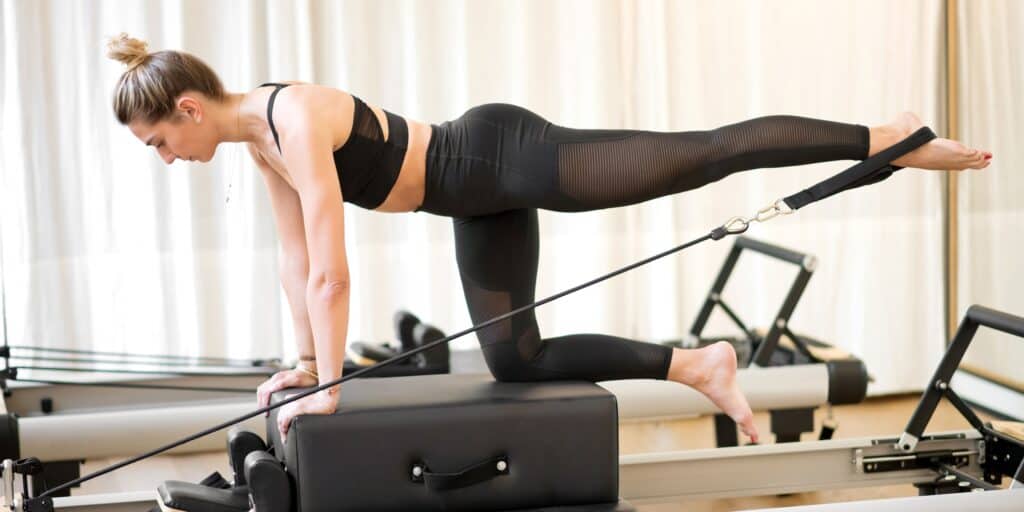Pilates is an exercise program meant to enhance posture, flexibility, balance, and strength. Pilates, which Joseph Pilates created in the early 20th century, mixes physical and mental activities to enhance general wellbeing. Since it has a low impact, it is appropriate for people of all ages and fitness levels.

Pilates has a number of advantages, from enhancing your posture and core strength to enhancing your general flexibility. Here are the top 10 advantages of Pilates:
1. Better Posture: Pilates helps you become more conscious of your posture. Your core muscles will become stronger as a result, enabling you to stand higher and with better posture in general.
2. More Flexibility: Pilates uses a variety of stretches and strengthening exercises to help you become more flexible.
3. Enhanced Strength: Pilates movements help to develop your muscles throughout your body, including your core. Your overall strength and muscle endurance will benefit from this.
4. Better Balance: Pilates focuses on exercises that test your ability to balance, which helps to enhance your balance and coordination.
5. Lessened Stress: Pilates is a moderate form of exercise that is effective in lowering tension and anxiety.
6. Better Breathing: Pilates is a workout method that emphasizes breathing. You may hone your breathing techniques and raise your general body awareness with some practice.
7. More Stamina: Pilates workouts help you build more stamina, which enables you to continue being active for longer.
8. Pilates focuses on movements that call for your complete attention, which helps to enhance concentration.
9. Better Coordination: Pilates focuses on exercises that test your balance and coordination, which helps to enhance your coordination and agility.
10. Increased Body Awareness: Pilates focuses on movements that call for you to be aware of your body in space, which helps to develop your body awareness.
After the list of Pilates’ advantages, here are some frequently asked questions:
The distinction between Pilates and yoga is a common question.
A: The goals of both Pilates and yoga are to increase balance, flexibility, and strength. Yoga, on the other hand, focuses more on stretching and breathing while Pilates focuses more on the core muscles and posture.
How frequently should I practice Pilates?
A: For maximum benefits, Pilates should be practiced two to three times each week.
Can Pilates work for people of all ages and skill levels?
A: Since Pilates is a low-impact training method, it is appropriate for people of all ages and fitness levels.
Is Pilates effective for shedding pounds?
A: By boosting your cardiovascular fitness, enhancing your metabolism, and burning calories, Pilates can aid in weight loss.
Does Pilates help with back pain?
A: Yes, Pilates can help to strengthen your core and back muscles, which can assist to relieve back discomfort. Pilates can also help to improve posture.
Can Pilates make you more flexible?
Certainly, Pilates’ variety of stretches and strengthening routines help to develop your flexibility.
Are pregnant women safe to practice Pilates?
A: Yes, pregnant women can safely workout with pilates. But, before beginning a Pilates program, you should speak with your doctor.
Is Pilates beneficial for athletes?
Athletes can benefit from Pilates since it helps to increase flexibility, balance, and coordination.
Is Pilates beneficial for seniors?
A: As Pilates is a low-impact workout, it is appropriate for senior citizens.
Does Pilates require any special equipment?
No, Pilates may be practiced without any special tools. Yet you can use tools like a Pilates reformer to perform some Pilates exercises.

